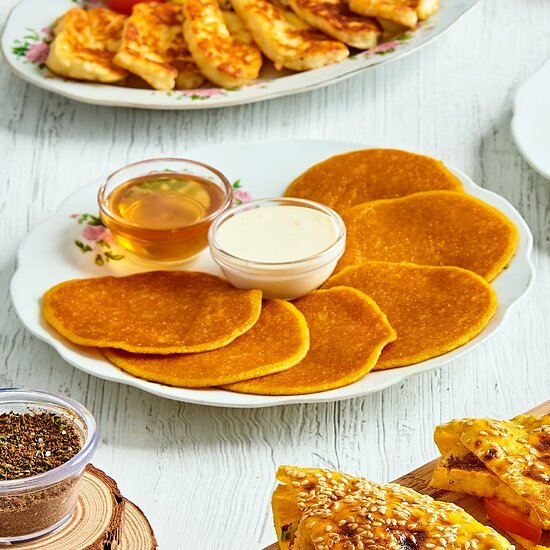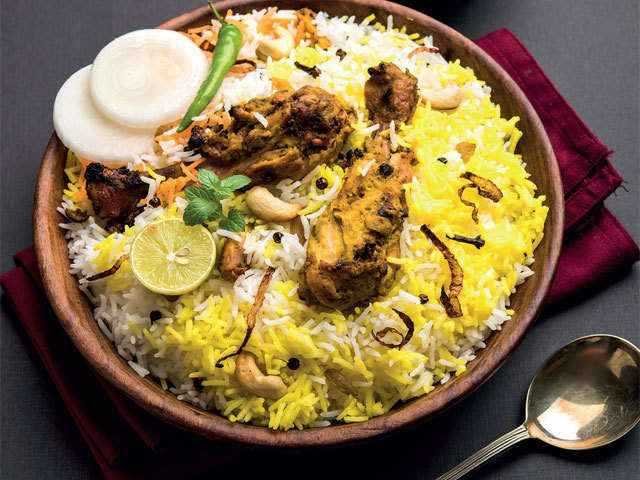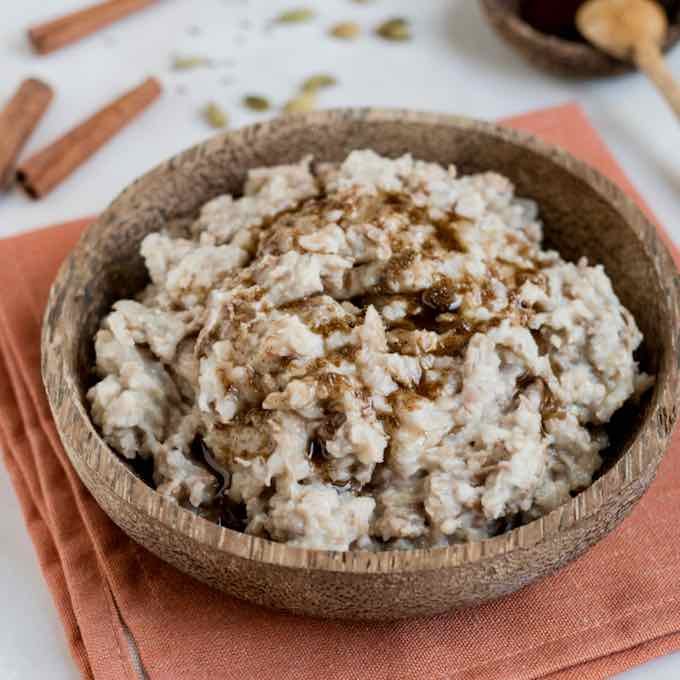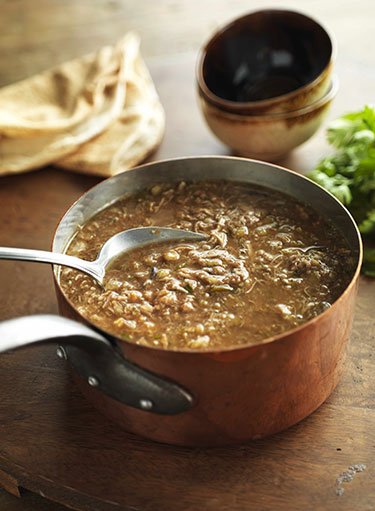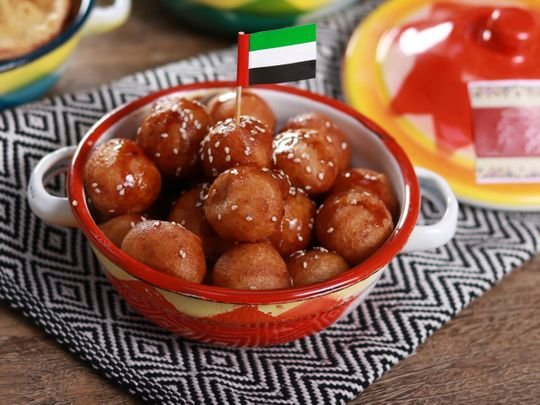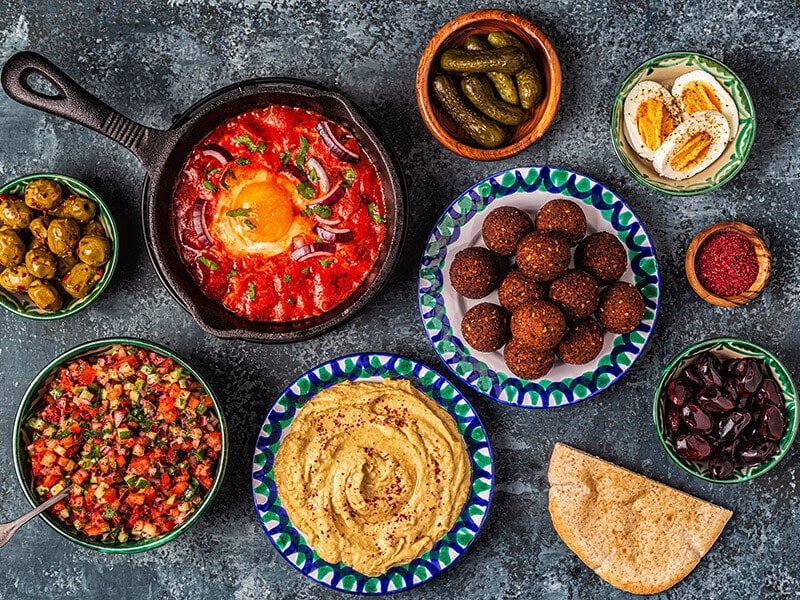Ingredient Ideology | THE EXEMPLARY & EXQUISITE - EMIRATI CUISINE
/Emirati cuisine is the local traditional Arabic cuisine of the United Arab Emirates. It is part of the Eastern Arabian cuisine and shares similarities with cuisines from neighboring countries, such as Omani cuisine and Saudi Arabian cuisine, as well as influences from different Middle Eastern and Asian cuisines. As a major international hub, the United Arab Emirates today has a multicultural and variety of cuisines from different parts of the world.
Cultivation of date palms in the area can be traced back to the mid-third millennium BC (commonly referred to as Umm Al Nar period in the United Arab Emirates) which many date seeds found in Umm al-Nar sites. The presence of grinding stones as well as fired clay ovens in archaeological sites indicate that grain processing was also performed. Studies of human dental remains dating back to the third millennium shows high level of attrition which is believed due to the mastication of dry bread.
The cuisine which originated in the area that is now the United Arab Emirates and was previously the Trucial States is formed by a similar Arabic and Middle Eastern cuisine which is consumed in the wider Arabian Peninsula. The food is a mixture of a Bedouin diet, consisting of meat and camel milk, a fishermen's diet, consisting mainly of fish common in the Persian gulf, and a farmer's diet, consisting mainly of dates. A blend of these diets as well as a mixture of spices such as cinnamon, saffron, and turmeric formed the basis of the common dishes consumed in the Trucial states region and the current traditional Emirati cuisine.
The traditional food of the United Arab Emirates uses much meat, grain, and dairy. Vegetables that are easy to grow in fertile soil, such as cucumbers and tomatoes, are strongly featured in the diet. Dried lemons, called loomi, are also heavily featured, grown locally, and used in most dishes. Mangos are also grown, usually in the northern emirates in villages such as Masafi. Meats traditionally used are chicken or small fowl, such as Houbara bustards, and goats. As camels are highly prized for their milk and transporting ability, the eating of camel meat is normally reserved for special occasions.
The dishes are usually like stews, as everything is often cooked in a single pot. Saffron, cardamom, turmeric, and thyme are the core flavors used in Emirati cookery. Rice was added to the diet when traders moved to the region. Leaves from indigenous trees, such as the Ghaff, were also used to stuff small birds for enhanced flavor.
Traditional dishes include Maq'louba, Margooga, Harees, Machbous, Frsee'ah, Fireed, Jisheid, and Mishwy. Breakfast in the UAE usually features breads like raqaq, khameer, and chebab, served with cheese, date syrup, or eggs. These were made over a curved hot plate, resembling a stone, which would have been used by the Bedouins. Balaleat is another dish, but its advent began with the traders, who introduced pasta.
Sweet options include luqeymat, a deep fried ball of pancake batter that is rolled in sesame seeds and then drizzled with date honey. Other desserts include khabeesa, which is flour bread crumbs blended with sugar, cardamom, and saffron or bethitha, a semolina blended with crushed dates, cardamom, and clarified butter.
At the close of the meal, it is usual to serve a red tea infused with mint as a digestive. Other mealtime traditions include a welcome with dates and gahwah (Arabic coffee), which are offered on arrival and are kept available through the guests visit. Levantine is sometimes confused as Emirati/Gulf, but shawarma, hummus, tabbouleh and mixed grill, whilst having similar characteristics, are fairly recent additions to the Emirati diet.
Seafood has been the mainstay of the Emirati diet for centuries.[3] The United Arab Emirates cuisine is a reflection of an Arabian heritage and exposure to other civilizations over time. Muslims are prohibited from eating pork, so it is not included in most menus. Hotels frequently have pork substitutes such as beef, chicken, sausage and veal rashers on their breakfast menus. If pork is available, it is clearly labelled as such. While most believe that a lot of non-veg like Meat, fish, and rice are the staple foods of the Emirati cuisine. Lamb and mutton are the more favoured meats, than goat, beef and Camel meat. Usually, Dates are consumed with meals.
Popular beverages are coffee and tea, which can be supplemented with cardamom, saffron or mint to give it a distinct flavor. Alcohol is generally only served in hotel restaurants and bars (but not in Sharjah). All nightclubs and golf clubs are permitted to sell alcohol. Specific supermarkets may sell pork in a separate section of the market.
What exactly is traditional Emirati food?
Meat, fish, and rice are the staple foods of the Emirati cuisine. Lamb and mutton are the more favoured meats, than goat, beef and Camel meat. Usually, Dates are consumed with meals. Popular beverages are coffee and tea, which can be supplemented with cardamom, saffron or mint to give it a distinct flavor.
What is the most famous out of the rest in Emirati foods?
The most popular Emirati dish, and common Arabic food, is the classic shawarma. This is a non-vegetarian delicacy which includes chicken, lamb, or beef, along with a number of vegetables, mixed with mayonnaise, and wrapped in soft flatbread.
What forms one of the major dish in the UAE?
Khuzi. Khuzi, or ghuzi, is the United Arab Emirates' national dish. It is a complete, filling and delicious meal since this dish consists of roasted lamb or mutton served on top of a bed of rice and topped with vegetables and nuts.
Which one is one of the most popular sweets in Emirati cuisine?
Made of flour, sugar, starch, cardamom powder and dry yeast, rolled in date syrup and sprinkled with date molasses; Luqaimat is one of the must-have traditional Arabic sweets. Luqaimat which can be translated as 'bite-size' in Arabic, is a sweet which comes from Qatar and is traditionally eaten in UAE.
What is UAE also known for?
Made of flour, sugar, starch, cardamom powder and dry yeast, rolled in date syrup and sprinkled with date molasses; Luqaimat is one of the must-have traditional Arabic sweets. Luqaimat which can be translated as 'bite-size' in Arabic, is a sweet which comes from Qatar and is traditionally eaten in UAE.
What are some common features found in the Emirati cuisine?
Emirati cuisine refers to the Arabic food traditions of the United Arab Emirates. It consists of aromatic dishes flavoured by a wealth of spices and herbs like saffron, turmeric, cinnamon, cardamom, coriander, and thyme.
Some popular must have dishes as part of Emirati Cuisine:
1. Balaleet is another popular breakfast dish in the Emirates. It refers to a noodle dish that can be both Savory and sweet. It is, in fact, a Savory-sweet dish that’s typically served for breakfast though it can also be eaten for dessert. Balaleet is made by first sautéing and then boiling vermicelli noodles. Once they’re cooked, they’re sweetened with sugar, cardamom, turmeric, and saffron-infused rose water. When eaten for breakfast, they’re usually served with an omelette or scrambled eggs on top.
2. Shakshuka is believed to be Tunisian in origin though it’s a staple breakfast dish in many parts of North Africa and the Middle East, including the UAE. In recent decades, it’s been embraced by the west and has become one of the most popular breakfast dishes hailing from that region of the world. Shakshuka refers to a simple but delicious tomato-based dish of poached eggs. To make it, shallots, garlic, tomatoes, bell peppers, and chilies are first sautéed in olive oil. Tomato paste, pureed uncooked tomatoes, and honey are then added to the pan. Once the tomato base is cooked, eggs are cracked into the mixture. The egg whites are allowed to blend into the tomato sauce while the egg yolks are left intact and poached to perfection. The dish is then sprinkled with za’atar and garnished with basil leaves before serving
3. Harees is a popular traditional dish in Emirati cuisine. It refers to a porridge made with beaten skinless wheat and meat, usually chicken or lamb. It’s typically served garnished with different ingredients like sugar, cinnamon, ghee, pistachio, and raisins. Harees becomes especially popular during the holy month of Ramadan. It’s a filling and nutritious dish that’s easy on the stomach, which is a boon during the month of fasting. Before using, wheat has to be soaked for at least 5 hours, better if overnight. It’s then placed in a pot of water with meat, onion, garlic, and spices. Even with a pressure cooker, it still takes at least 1.5 hours for the wheat to be fully cooked through. The grains are then mashed till smooth and cooked in a pan with the deboned meat
4. Madrouba, also spelled madrooba, is another type of Emirati porridge made with rice and meat, usually chicken. It’s similar to Harees in that it’s traditionally prepared by beating the rice into a smooth mash using a wooden spoon called a medhrab. Though the dish may look deceptively simple, it can be fairly involved to make. and coconut milk while being constantly stirred. To prepare, the meat is first boiled and simmered in a pot of water with caramelized onions, dried lime, and spices. After the meat is cooked all the way through, rice is added and stirred constantly to ensure that it doesn’t stick and burn. Stirring also softens the rice instead of leaving it to absorb all the fluids like in machboos. The rice is then mashed into a fine consistency. For me, madrouba is the ultimate comfort food. It’s thick, nutritious, and filling. Plus, it’s delicious, too.
5. Machboos- No Dubai food guide would ever be complete without machboos. Also known as kabsa, it’s a traditional rice dish that’s widely considered to be a national dish in all countries of the Arabian Peninsula. Machboos refers to a hearty meat and yellow basmati rice dish. But unlike Ghuzi, the meat and rice are cooked together in one pot. The meat, usually lamb, is marinated in a mixture of spices like garlic, cumin, cloves, bzar (Emirati spice blend), and chilli powder. It’s then browned in oil before being braised in water or stock with onions, garlic, turmeric powder, coriander powder, dried lime, and chopped tomatoes. Once the meat is almost cooked, soaked basmati rice is added to the pot and slow-cooked at very low heat, undisturbed, until all the cooking liquid is absorbed. Coriander leaves and green chilies can also be added before the rice is fully cooked.
6. Kunafa- it consists of kataifi pastry soaked in a sweet, sugar-based syrup and layered with cheese. Depending on where it’s from and who’s making it, it can be enriched with other ingredients like pistachios, almonds, raisins, rose water, lemon juice, and cinnamon. It’s decadent and delicious and a definite must-try dessert in the UAE. If you visit Dubai or Abu Dhabi, then you must not miss kunafa. It’s an incredibly delicious dessert that’s consumed in many Arab and Balkan countries like Egypt, Turkey, Greece, and Lebanon.
7. Gahwa: There’s no better end to a decadent meal in Dubai than with dessert and a cup of Arabic coffee. Known in the Emirati dialect as gahwa, coffee has been a central part of Arab culture for centuries. In fact, so important is the coffee tradition to Arab culture that it was awarded Intangible Cultural Heritage status by UNESCO in 2015. Arabic coffee is strong and bitter so it’s traditionally served with dates and other desserts.
On a concluding note: To a lot of people, Emirati food is shrouded in mystery. However, it’s one cuisine that needs to be discovered. Traditional Emirati cuisine is exciting, intense, unique, and most certainly worth exploring. If you visit Dubai in May, then you need to attend the Dubai Food Festival. Add it to your itinerary along with traditional Emirati restaurants in Dubai, Abu Dhabi, and any other destination in the UAE. There are many reasons why Dubai and Abu Dhabi are among the most visited cities in the world. Good local food is definitely one of them. On the whole if we compare the choice of foodies today we are quite open to trying out new recipes, flavours and dishes which have a robust and aromatic feel with a hint of flavour and a pinch of passion which makes it stand out every single time and leaves an impression which brings back the customer yet another time to relish our very best recipes!


